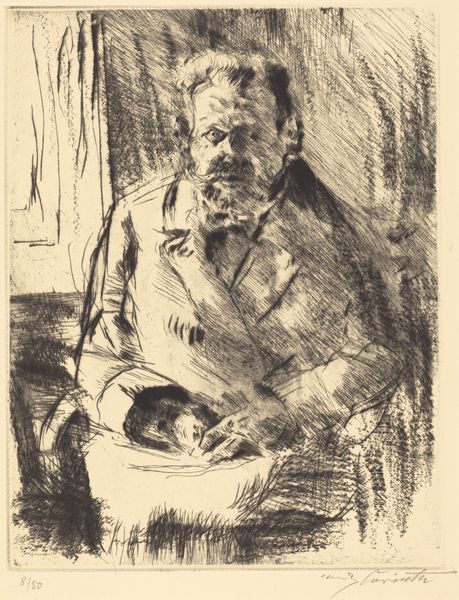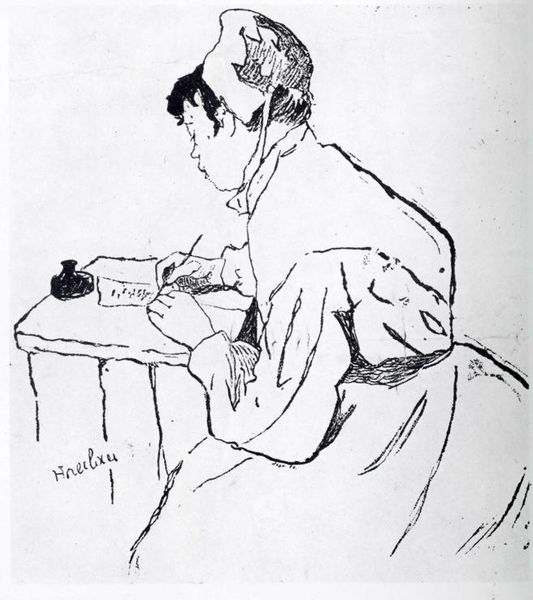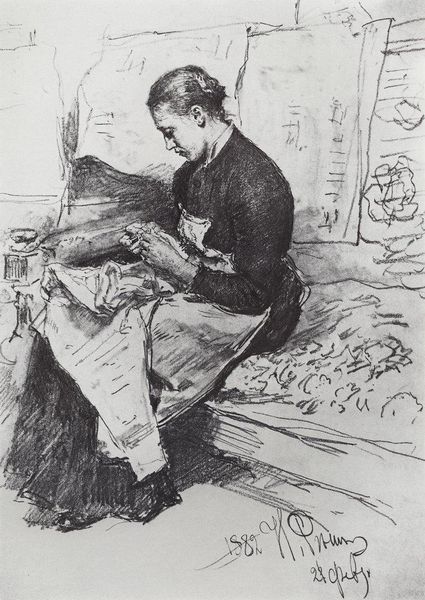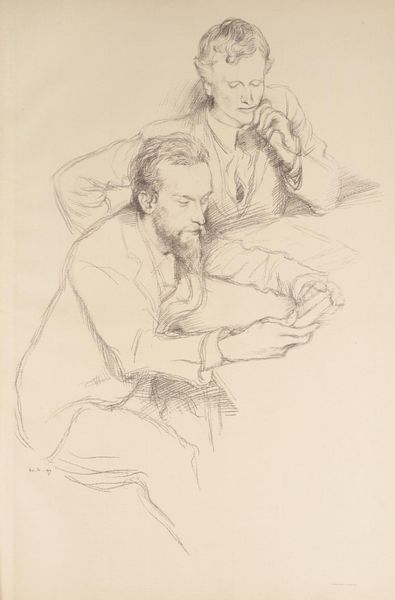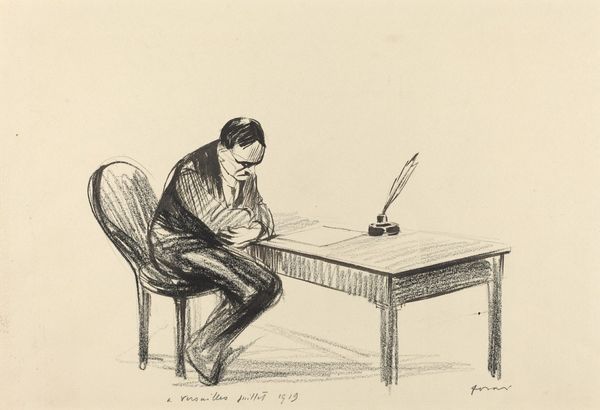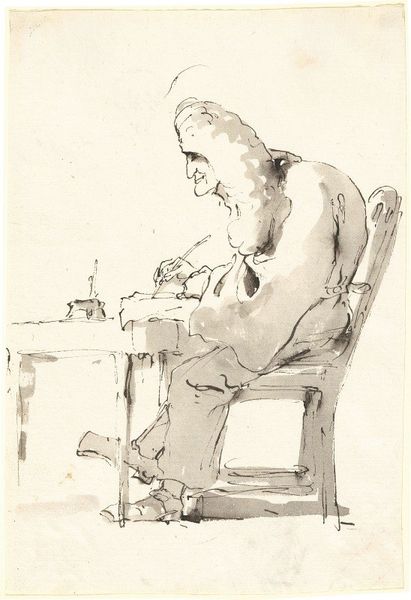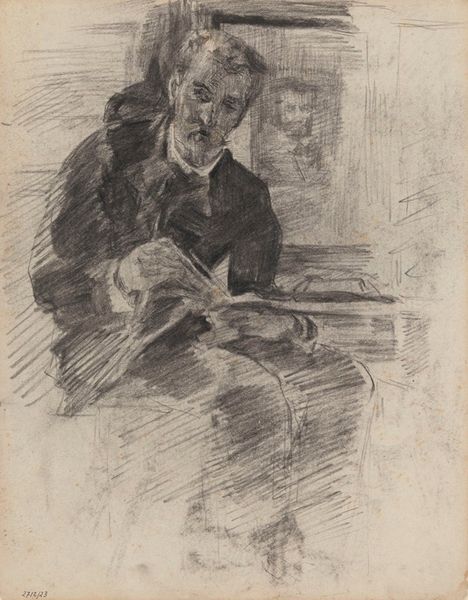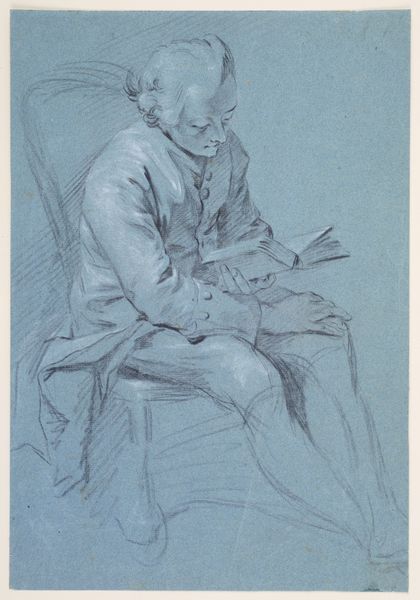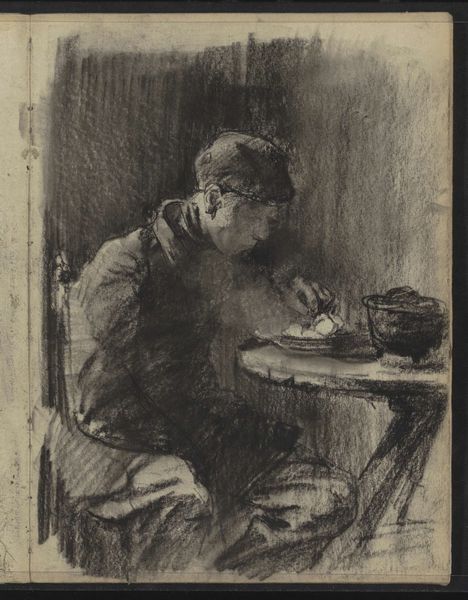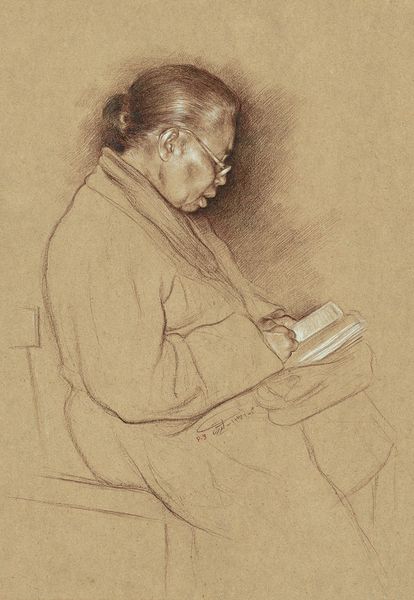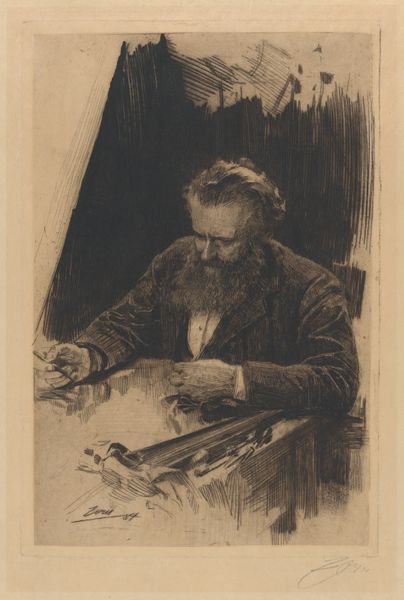
drawing, ink, pencil, graphite, charcoal
#
portrait
#
drawing
#
charcoal drawing
#
ink
#
pencil drawing
#
pencil
#
graphite
#
russian-avant-garde
#
portrait drawing
#
charcoal
#
realism
Copyright: Public domain
Editor: We're looking at "Leo Tolstoy Working at the Round Table" by Ilya Repin, made in 1891. It seems to be a drawing, probably in pencil or charcoal. It’s quite striking how the artist captures Tolstoy so focused and absorbed in his writing. What stands out to you most in this piece? Curator: The drawing gives us insight into the representation of intellectual labor in late 19th-century Russia, but also into the dynamic between artist and subject, Repin and Tolstoy, both towering figures of Russian culture. How does this depiction of Tolstoy contribute to the mythos surrounding him? Is this image intended for public consumption or is it more intimate? Editor: That's interesting – I hadn't thought about the public versus private aspect. It does seem rather informal, doesn't it? He is caught in mid-act, like a photograph. So, did Repin use portraiture strategically, to further his own public standing or align himself with influential figures like Tolstoy? Curator: Precisely. Consider the Russian art scene at this time, the rise of Realism and its commitment to depicting everyday life. Repin was a key figure, interested in social and political reform. So, how might portraying Tolstoy at work, in this seemingly unstaged way, reinforce certain ideas about intellectual engagement or artistic integrity that resonate beyond a mere portrait? Does it celebrate Tolstoy's commitment to social issues and personal productivity? Editor: I see! It makes me think about the power dynamics at play, too. Repin choosing to depict Tolstoy in this way frames our perception of him. I'd initially viewed it as simply a study of a writer. Now, I’m understanding how it’s much more calculated and tied to their respective roles in society. Curator: Indeed. Art isn't created in a vacuum. Considering its public function gives it another layer of meaning. This one drawing has plenty to say about artistic, social, and political contexts of its time.
Comments
No comments
Be the first to comment and join the conversation on the ultimate creative platform.
